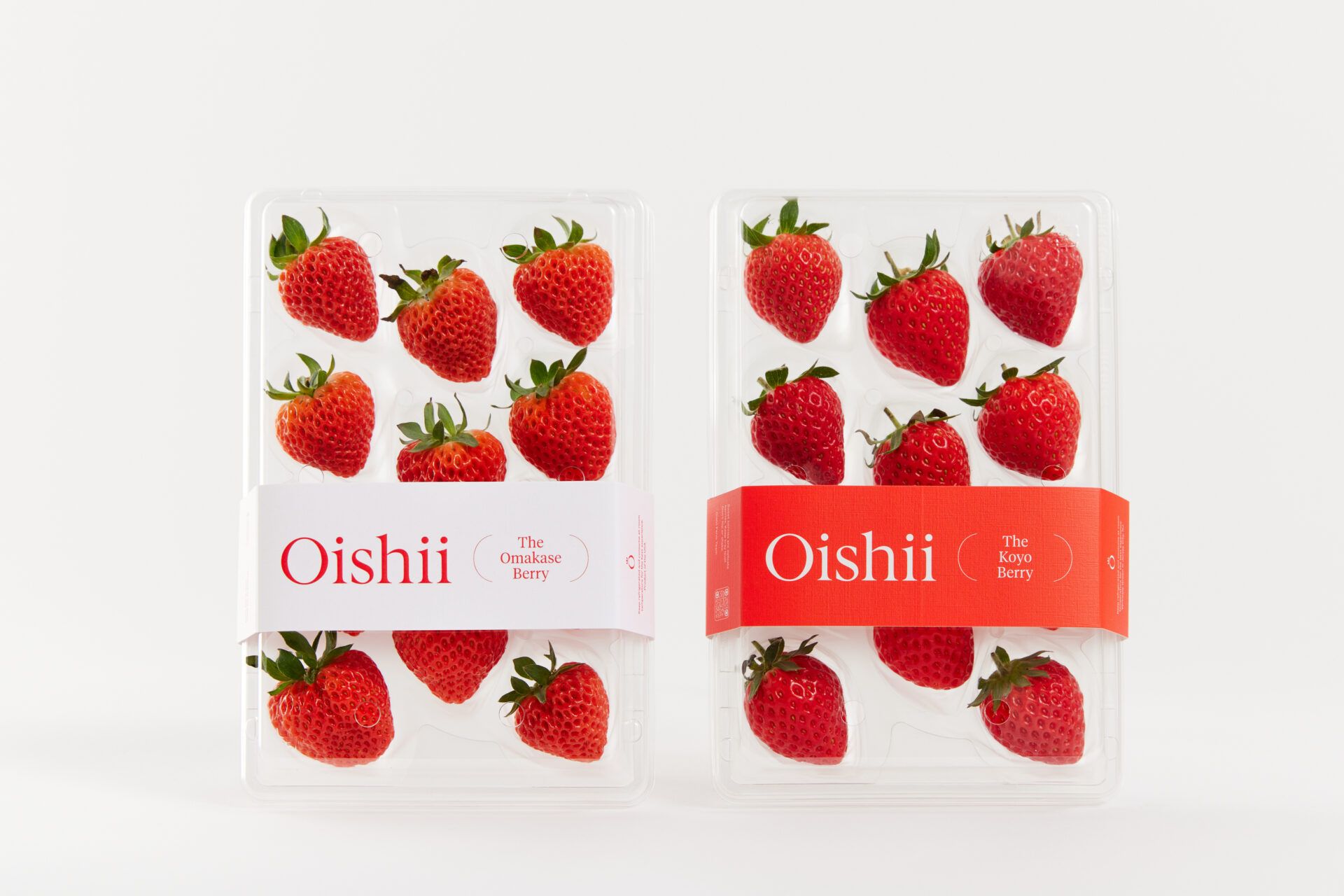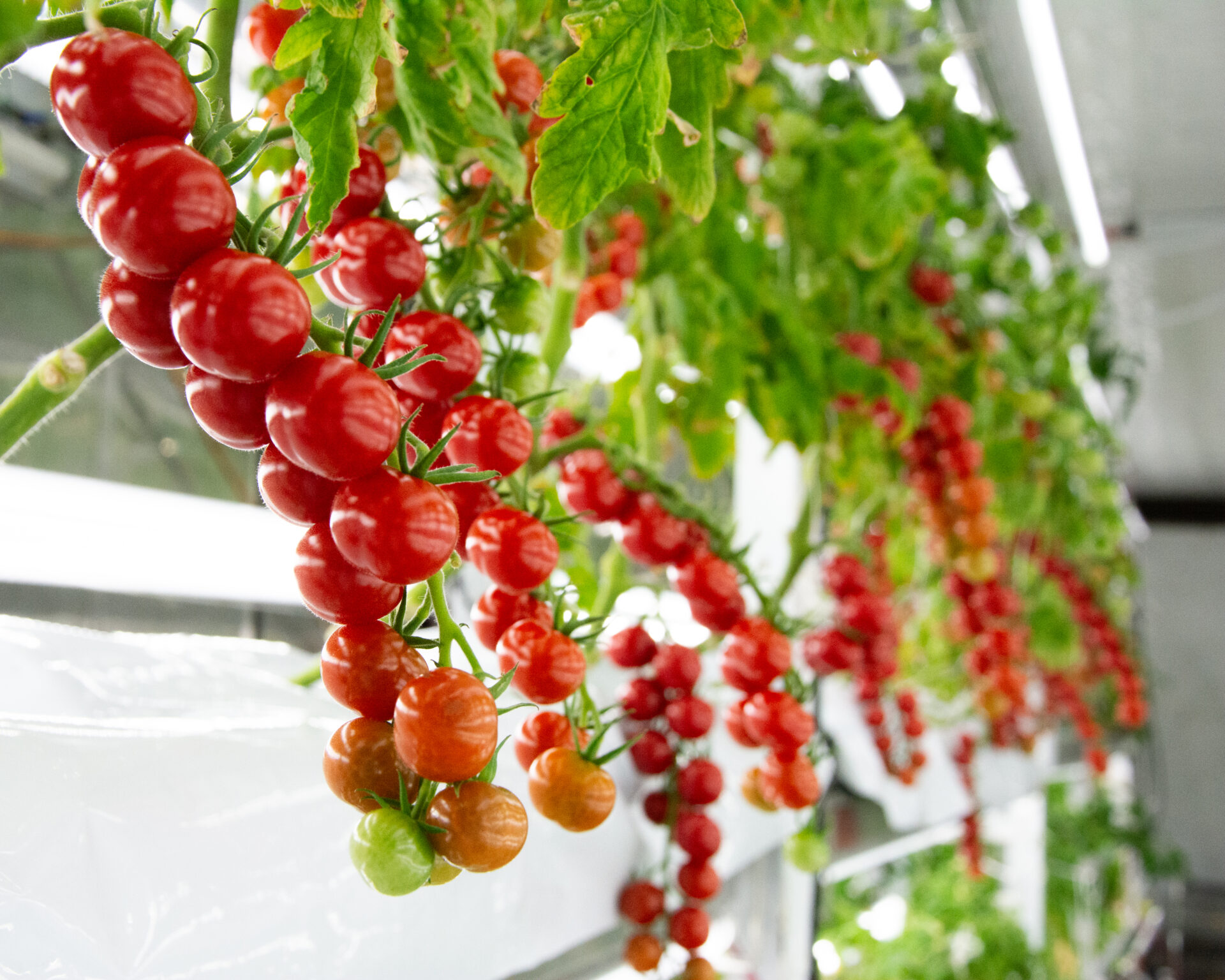- US-based vertical farming company Oishii has raised $134 million in Series B funding.
- Japanese telecomm giant NTT led the round with participation from Bloom8, McWin Capital Partners, Mizuho Bank, Mitsubishi Shokuhin Co., Ltd., the Japan Green Investment Corporation for Carbon Neutrality (JICN), and industrial robotics company Yaskawa Electric Corporation.
- Oishii will use the new funds to open a solar-powered vertical farming facility, expand into new markets and invest in R&D projects around breeding, robotics and automation.

Expansion time and next-gen vertical farming facility
Oishii expanded availability of its products for the first time in 2023 to the Northeast US. A chunk of the new funding will go towards further expansion, says CEO and co-founder Hiroki Koga.
To do that, Oishii will first need space to grow more produce.
“Right now, we’re really constrained on what we can produce,” he tells AgFunderNews. “We have so much demand from the market, but it took us many years even just to get to [the Northeast US]. Even there, we’re not in nearly as many stores as we want because of production capacity.”
Oishii’s indoor vertical farming facility in Jersey City currently grows two types of strawberries and the recently unveiled Rubī Tomato. All products are available via FreshDirect and select Whole Foods stores in the areas Oishii serves, though supply goes quickly. For instance, the company sells out of its tomatoes in Jersey City so quickly they have yet to reach participating stores in New England, says Koga.
The company already has a “next-generation facility” in the works that will expand its supply of products by more than 10x, he adds. He declined to provide more details on the forthcoming facility, other than that it will be solar powered.
As for expanding to other parts of the US, Koga says Oishii needs to “keep on building facilities around the country.” However, the company is solely focused on the new facility at the moment, which will be able to go “more inland.”
“But even with that, we won’t be able to get into all the supermarkets that have asked for our berries,” he adds.

Oishii ‘bucked all trends by emphasizing taste over timelines’
“While many in the industry prioritize short crop cycles and unrelenting expansion, Oishii has bucked all trends by emphasizing taste over timelines and profitability over proliferation,” notes Akira Shimada, president and CEO of NTT.
Oishii’s current product lineup reflects this. Both of the company’s strawberries are based on berries from specific regions of Japan and grown via indoor environments that mimic those regions’ climates and conditions. The Rubī Tomato, called a “fruit tomato” in Japan, contains high levels of sweetness and umami.
The ongoing challenge for Oishii will be how to continue prioritizing that quality at the same time the company needs to grow in scale.
Koga seems unfazed by the task. “We’ve always had a five-year or 10-year strategy roadmap,” he says. “We never optimized for [raising] money in the next two years and trying to convince investors on a much shorter timeline or returns because it’s not realistic.”
Market correction ‘completely anticipated’
Anyone with an eye on vertical farming in the US knows of the market correction the sector is currently undergoing.
Tokyo-born Koga said in an interview last year that this correction was “completely anticipated,” a similar cycle having already happened in Japan more than a decade ago.
“In the early 2000s, Japan had a few hundred vertical farms across the country — probably more than the number of vertical farms that exist today in the US. Almost all of them closed. People thought it was a fascinating technology, but they realized that the unit economics didn’t work.”
Of the current correction in US vertical farming, he says many companies “decided to go [the quick] route because it’s easier to raise money. But most companies failed to actually deliver on what they promised. Even though they were able to raise hundreds of millions of dollars — probably 10 times more than what we raised up until our Series B — they struggled to deliver.”
By contrast, Koga says Oishii has always been “very transparent” with investors around the difficulties inherent to building a vertical farming company, let alone scaling one. That transparency allows the company to “have a very clear strategy that will allow us to establish a brand based on our quality.”
Part of this is also Oishii’s investor base — the majority of participants to the Series B are investors from Japan that have already dabbled in vertical farming.
For example, NTT has an entire department devoted to agriculture.
“They’ve even tried strawberry vertical farms in the past, so they know what it takes to run a vertical farm business,” says Koga.
“That’s actually a good thing for us because they’re pros in this. They looked under the hood, they saw that we were doing something that has never been done before. And they know exactly what our technology is, what our strategy is, and they believe in what we’re able to do.”

Optimizing plants for vertical farm production
The Series B will also fund additional R&D, says Koga, including enhancing Oishii’s breeding program.
“Up until this point, we’ve been adopting existing cultivars, mainly from Japan. But from here on, we want to start actually breeding and to optimize for vertical farm production,” he says.
“We don’t have to worry about disease or drought resistance, — factors that are pretty critical for outdoor growing — so we can really, purely optimize for taste and yield.”
Investing in both breeding and automation are priorities right now for Oishii, though Koga suggests the former could be more impactful to the company’s bottom line.
“Automation is what a lot of people focus on, but when you break down the actual cost of vertical farm operation, automation is only replacing part of your cost with just labor. But if you get 20% more yield [through plant breeding], that’s a much much bigger lever than automating your process by 20%.”
Oishii currently has berry-picking robots in its farm, which it will continue to fine-tune for accuracy. Other processes, such as packaging and quality checks, are “relatively labor intensive when it comes to strawberries” and might be automated in the future.

Vertical farming comeback?
“I think we’re hitting the bottom now,” Koga says of the current “trough of disillusionment” through which vertical farming is trudging. “I think there are only a handful of vertical farms that have raised a material amount in the past that are still standing. From here on, as an industry, it’s about trying to come back and then become the mainstream.”
Oishii’s Series B is the largest amount raised by a vertical farming company in quite some time. According to preliminary 2023 data from AgFunder, no vertical farming company raised more than GoodLeaf’s CAD78m (US$58 million) last year — a far cry from just a couple years ago when companies were raising hundreds of millions in a single round.
“Until there’s one or two companies that raise funds successfully, I think the investor sentiment is going to be bitter,” says Koga, who hopes Oishii can help turn the tide for vertical farming.
“Hopefully now we can demonstrate to the world that at least there’s one company that’s convinced some 20 investors that this actually works.”



